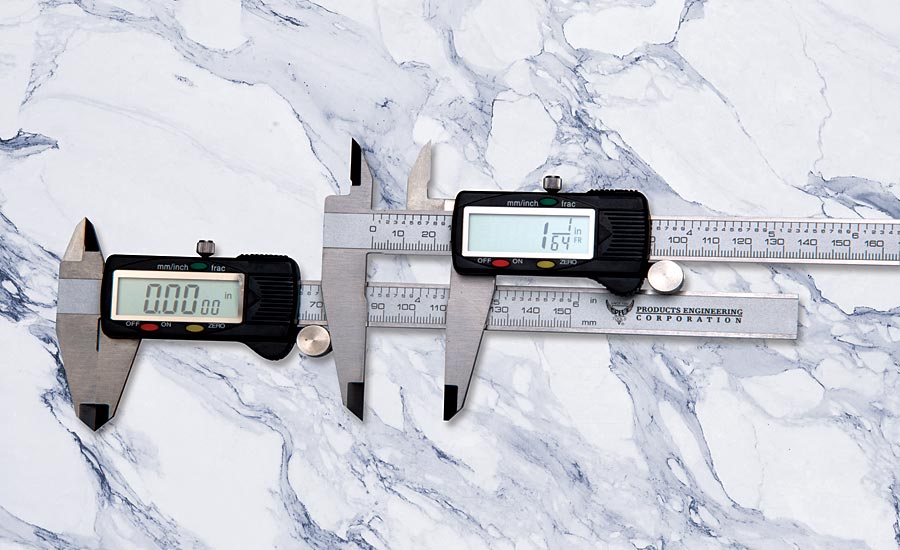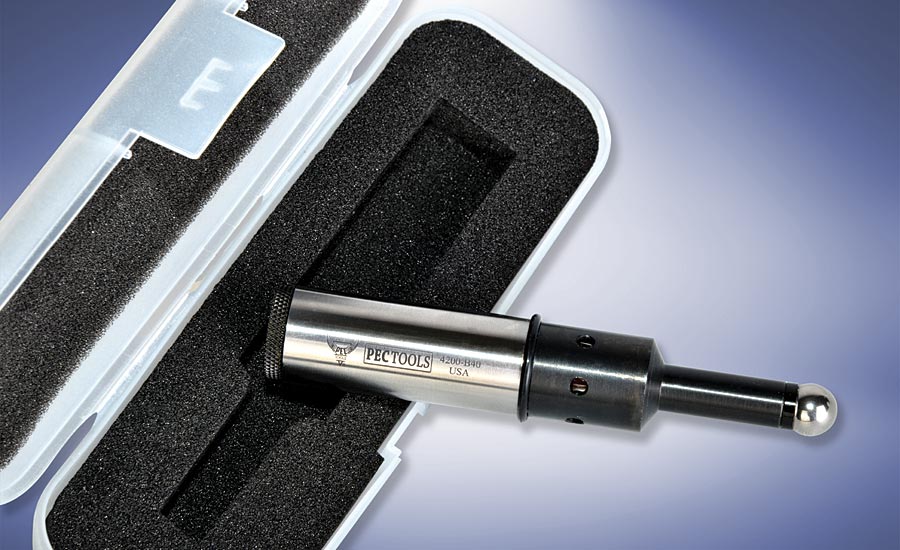Although predicting the future is hardly a precise science, it’s possible to identify trends and there have been some recent shifts worth noting.
Crystal Ball Gazing
There has been huge growth within the global industrial landscape. It has been reported by some research industry analysts that the global industrial metrology market accounted for $8.81 billion in 2017 and is expected to reach $16.76 billion by 2026, growing at a compound annual growth rate (CAGR) of 7.4% during the forecast period.
Some of the key driving factors for the market growth: the growing adherence to global quality standards; increasing demand for inspection and measurement services from the precision manufacturing industry and emergent big data analytics; a shortage of service providers that offer comprehensive metrology services; a greater focus on quality control, to reduce the number of product defects and boost profitability; an inability of traditional measurement tools to address many manufacturing, production and service-related issues. This has resulted in greater demands for higher-quality precision measuring tools.
So today, smart metrology suppliers are looking to expand their offerings, providing a number of new products or making improvements to past measurement tools. For example, supplying a variation of an existing instrument with enhancements that make it simpler to use, work faster and perform more accurately and reliably; utilizing/integrating technological advancements; enabling the existing tool design to operate in areas that could not be accessed before; and offering tools that are more customized or built for a specific application.
Another change is that many industries are realizing that metrology tools can be more than a necessary expense and rather a way to add value, reduce turnaround time and costs, as well as improve process efficiency without compromising quality. Therefore, for optimal productivity, they are willing to spend more money than ever before on high-quality, customized gages and metrology tools that are portable, simple-to-use, accurate and provide easy accessibility to data. Although the manufacturing, production and other service-related sectors continue to lead the demand for precision measuring tools, the dental, medical/healthcare, automotive, aerospace and defense, as well as semiconductor industries are close behind and looking for similar solutions.
Other trends are the recent interest in electronic technologies; increased integration of automation and laser technology; the development of 3D precision measuring tools; robotic metrology instruments and artificial intelligence—all of which offer a glimpse into the future.
The Demand for Electronic Precision Measuring Tools
Typical contact measurement tools such as calipers, edge finders, micrometers, depth micrometers, gage pins, gage blocks, height gages, etc., make up the majority of what is traditionally used for dimensional metrology. However, recent interest in electronic technologies from the manufacturing, engineering, as well as research laboratories has resulted in their adoption by metrology suppliers, who are successfully integrating them into their products.
Electronic calipers and edge finders are becoming popular because they are fast, easy to read, simple to use, and offer many functions and error-free measurement. Three such examples of these tools are fractional electronic calipers, poly carbon fiber calipers and electronic edge finders.
The fractional electronic caliper is a versatile, stainless steel tool used to determine internal, external, depth and step measurements with close accuracy. It can measure up to .01mm, .0005” and 64ths fractions resolution. Compared to dial and Vernier calipers, fractional electronic calipers offer multiple features and simplified interfaces making them easier to read, simpler to use, and with quicker access to instrument data.
For example, earlier versions of this type of measuring tool required excellent eyesight to read the small sliding scale. Using a fractional electronic caliper enables users to work much faster because it is easier to see. Readings are electronically generated and digitally displayed in clear, easy-to-read LCD numerals.
Users can also seamlessly convert their measurements by pressing a three-way inch/mm/fraction button. The floating zero button enables them to zero the caliper at any point. A locking nut tightens to lock measurements for a stable, accurate reference. Data can be input to a printer or computer for processing. The fractional electronic caliper is an excellent precision measuring tool for metalworkers, woodworkers, machinists and engineers.

Electronic calipers and edge finders are becoming popular because they are fast, easy to read, simple to use, and offer many functions and error-free measurement.
The poly carbon fiber caliper features a lightweight, polycarbonate frame that is highly durable, impact-resistant and easy to handle. This tool provides fast inside and outside measurements with close accuracy. It can measure in resolutions of .0005”, .01mm. Readings are electronically generated and digitally displayed in LCD numerals that reduces errors. A two-way push button converts from inches to millimeters. The floating zero button enables users to zero the caliper at any point. A locking nut tightens to lock measurements for a stable, accurate reference and a thumb roll allows for smooth and easy measurements.
The poly carbon fiber caliper is a non-sparking tool that provides protection against fires and explosions in environments where there is concern for sparks igniting flammable solvents, vapors, liquids, dusts or residues. Additionally, it’s non-marring so it won’t scratch soft metals. This caliper is commonly used in the oil and gas, chemical and pharma, explosives and auto industries.
The electronic edge finder is used to quickly and easily locate edges of work pieces, as well as height offsets and features a high sensitivity probe for accurate positioning. It works in a spindle, a great advantage over its mechanical counterpart. Battery-operated, it works by lighting up its internal LED light when the electrical circuit, performed by the edge finder and the work piece, is completed. The light is illuminated when the edge finder is touching the work piece and is visible through openings in the case. The electronic edge finder is great for blind and deep applications and is the ideal tool for machinists or operators, accommodating a wide range of jobs, decreasing set-up times and ensuring precise, repeatable positioning.
An Intensified Interest in “Touch-Less” Tools
Today, various industries are also showing great interest in noncontact or “touch-less” dimensional measurement tools such as laser scanners. These make up a great deal of three dimensional technologies that are in common use, or will be soon.
Laser scanners have an edge over traditional precision measuring tools that are unable to provide suitable measurement solutions in accordance with modern day requirements. They offer maximum productivity, scalability and traceability, as well as quick, easy and accurate access to a vast amount of data via their touch-less method of collecting that data. Demand for laser scanners is mainly coming from the automotive, manufacturing, engineering product design and aerospace industries.
The Talk Surrounding 3D Technology
There are many good reasons why 3D precision measuring tools (for example, laser trackers, high definition scanners) are being talked about so much. Three-dimensional measurement tools save time and money when compared to traditional measuring methods. They are extremely appealing due to their size, ease-of-use, portability, reliability, repeatability, accuracy and their ability to capture large volumes of 3D coordinate data quickly and in real-time. This is why so many metrology suppliers are now producing these tools that allow their customers to improve product quality, reduce turnaround times and cut operational costs. The aerospace industry has been one of the early adopters, where there are stringent quality standards and regulations; following close behind is the automotive, power generation, construction, manufacturing, petrochemical, nuclear, oil and gas, pulp and paper, marine and ship building industries.
The Rise of Automation, Robotics and Artificial Intelligence
There’s no question that computer technology is changing the world and exerting a huge influence on the metrology landscape. There have been huge digital advances over the last few years and they will continue to grow, providing us with more innovative solutions that increase productivity and process efficiency, as well as improve the quality of goods and services while reducing time and costs. Metrology software is simplifying and accelerating dimensional analysis and quality control processes. Additionally, automation software has become a necessity, rather than a luxury, optimizing employee time and work and leading to enormous resource savings.
Since the ‘80s, robots have also started to transform the manufacturing sector and now combined with AI technology they are performing learning and judgment tasks! Today, AI-based machines are part of such sectors as well as transportation, food production and healthcare. Another area where AI is becoming extremely influential is chatbots, which are computer programs that simulate conversation with human users; for example, have you talked to Alexa or Siri lately?

The electronic edge finder is used to quickly and easily locate edges of work pieces, as well as height offsets and features a high sensitivity probe for accurate positioning.
A Shift from Mass Production to Mass Customization
It once was the norm for users to buy on-the-shelf precision measuring tools in standard specifications. However, now it appears that there is a steep inclination toward custom-made gages in line with the target applications and associated specifications.
Many industries are increasingly expecting customized/application-specific gages and industrial metrology tools that they buy, as opposed to traditional hand tools and are willing to pay more for these instruments. As a result, these tools are commanding premium prices and driving customer loyalty, offering huge benefits in time and cost for those who use them. Slowly but surely, metrology suppliers won’t be able to afford just producing a “One Size Fits All Tool.” As a result, they are now leaning towards mass customization and acting quickly to meet customer demands.
We All Wish We Could Predict the Future…
People have always yearned to know what the future holds. Who doesn’t want a glimpse, if only for a few moments, to see if our destiny lies in riches or ruins? Imagine the scenarios we could prepare for, or the events we could avoid going forward!
One of the many super powers research industry analysts have is their ability to analyze various marketplaces and make predictions. Through exhaustive research that covers a magnitude of factors such as trends, technological evolution, economic shifts and detailed studies of market segments, they’re able to give us a look at the future through their analytical “crystal ball” and metrology suppliers need to take notice.
As for me and my crystal ball readings, please note that the predictions I made in this article need to be viewed as simply an indication of what may happen and not be accepted as conclusive evidence of what will happen. Better you trust the research industry experts for that!


